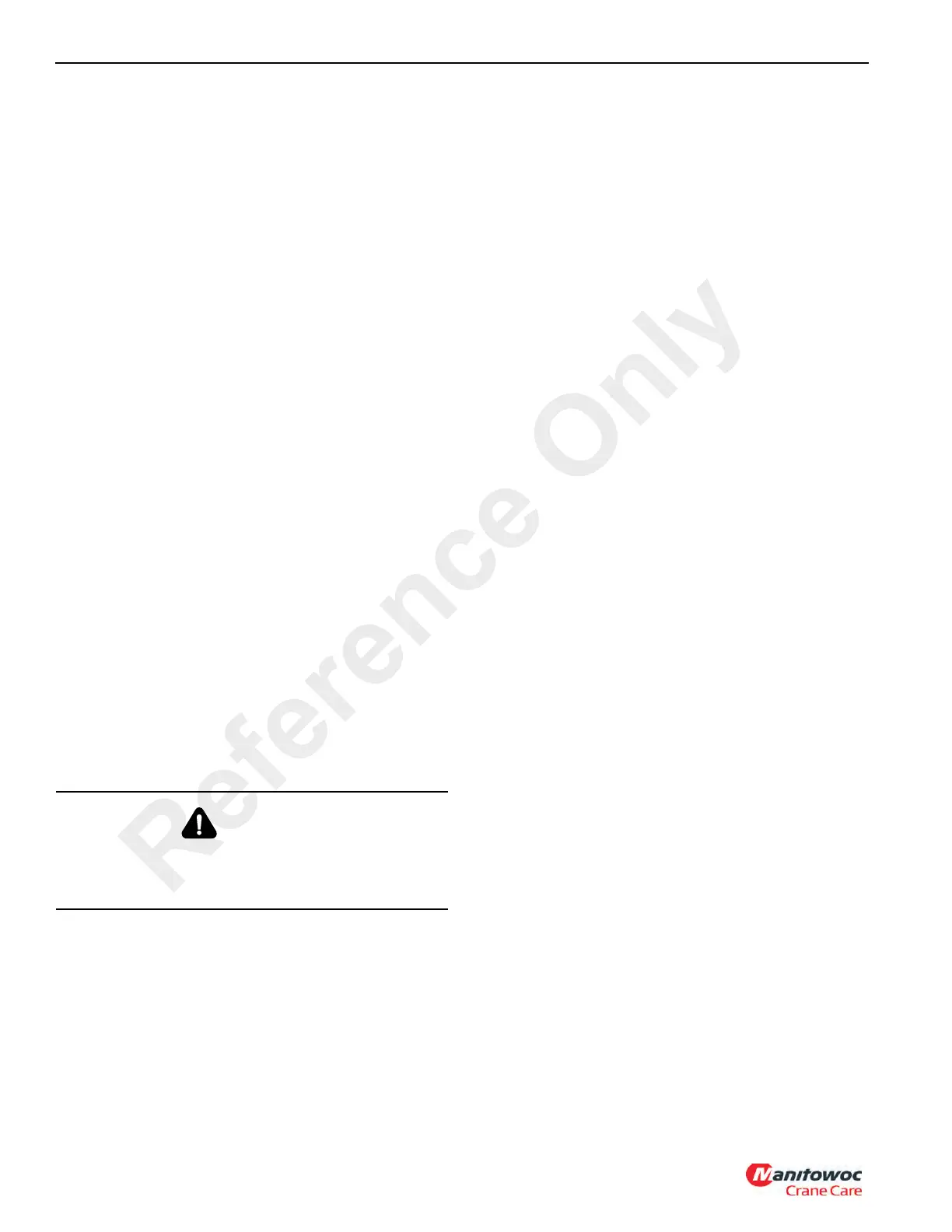POWER TRAIN TMS700E SERVICE MANUAL
7-24 Published 01-29-2015, Control # 512-01
11. Blow insects and dirt from the radiator core air
passages, using water, if necessary, to soften
obstructions.
Component Inspection
Radiator/Recovery Tank
1. Top and Bottom Tanks - Look for leaks, particularly
where the tank is soldered to the core. Vibration and
pulsation from pressure can fatigue soldered seams.
2. Filler Neck - The sealing seat must be smooth and
clean. Cams on filler neck must not be bent or worn so
as to allow a loose fitting cap. Ensure the overflow tube
is not plugged.
3. Radiator Cap - This is the pressure-setting type. Its
purpose is to hold the cooling system under a slight
pressure, increasing the boiling point of the cooling
solution and preventing loss of solution due to
evaporation and overflow.
The cap has a spring-loaded valve, the seat of which is
below the overflow pipe in the filler neck. This prevents
the escape of air or liquid while the cap is in position.
When the cooling system pressure reaches a
predetermined point, the cap valve opens and will again
close when the pressure falls below the predetermined
point.
When removing the pressure type cap, perform the
operation in two steps. Loosening the cap to its first
notch raises the valve from the gasket and releases the
pressure through the overflow pipe. In the first stage
position of the cap, it should be possible to depress the
cap approximately 3 mm (0.13 in). The prongs on the
cap can be bent to adjust this condition. Care must be
taken that the cap is not too loose as this would prevent
proper sealing.
4. Tubes are very small and can become easily clogged by
rust and scale. The general condition of the cooling
system and operating temperature are indications as to
whether or not tubes are clean. Another good test is to
feel the core for cold spots.
5. Fins are thin metal sheets that dissipate heat picked up
by the tubes. They should be kept free of bugs, leaves,
straw etc., so as to allow the free passage of air. Bent
fins should be straightened.
Engine Water Jacket
The water jacket permits coolant to be circulated around the
cylinder walls, combustion chamber, and valve assemblies.
Some of these coolant passages are small and can easily
become clogged, if the cooling system does not receive the
proper maintenance.
• Core Plugs - These are sometimes mistakenly called
freeze plugs. They do not provide protection against
freezing expansion, but are only present because of
engine block casting methods. Remove and replace
core plugs that show signs of leaking or rusting through.
Use an installation tool for core plug replacement.
• Drain Plugs - The water jacket of each engine has one or
more drain plugs. These should receive seasonal care
and be kept free of rust and scale.
• Gaskets - Must be in good condition to prevent both
internal and external leaks. If there are external leaks
around gaskets, there may also be internal leaks into the
engine. Proper tightening of the head bolts with a torque
wrench is essential for preventing leaks around the head
gasket.
Water Pump
The pump should be checked carefully for leaks and proper
lubrication. Replace or rebuild if leaking, cracked, or worn.
Fans and Belts
The fan should be checked for cracked or broken blades.
Refer to Engine Drive Belts, page 7-6 in this Section.
Thermostat
The thermostat is of the nonadjustable type and is
incorporated in the cooling system for the purpose of
retarding or restricting the circulation of coolant during
engine warm up. Engine overheating and loss of coolant is
sometimes due to an inoperative thermostat. To check for
this condition, remove the thermostat and test by
submerging it in hot water and noting the temperature at
which the thermostat opens and closes. Use an accurate
high temperature thermometer for making this test.
Hoses and Clamps
Hoses and their connections must be checked regularly
because they are often the source of hidden trouble. Hoses
may often times appear in good condition on the outside
while the inside will be partially deteriorated. If there are any
doubts about a hose doing its job, replacement should be
made. The clamps should be inspected to make sure they
are strong enough to hold a tight connection.
Test Equipment
The antifreeze/coolant concentration must be checked using
a refractometer. “Floating ball” type density testers or
CAUTION
Loosen cap slowly and pause a moment to avoid possible
burning by hot water or steam.
Continue to turn the cap to the left until it can be removed
Reference Only

